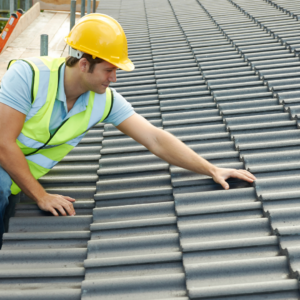In Colorado’s wildfire-prone areas, homeowners face significant risks when it comes to roof vulnerability. A poorly installed roof may leave your home exposed to embers and fire damage. Implementing roof wildfire resistance tips for maximum protection can make all the difference in safeguarding your property.
To ensure your roof is properly installed, follow these tips: Hire a qualified roofing contractor with experience in fire-resistant systems, select Class A fire-rated materials like metal or slate, ensure proper installation of non-combustible underlayment, seal roof vents, and edges to prevent ember intrusion and schedule regular roof inspections to maintain integrity and safety. These roof wildfire resistance tips for maximum protection are essential for ensuring your roof provides maximum protection against wildfires and other weather-related risks.
- Understanding the Importance of Roof Fire Resistance in Colorado
- Hire a Qualified Roofing Contractor for Wildfire Resistance
- Choose Class A Fire-Rated Materials for Maximum Protection
- Ensure Proper Installation of Non-Combustible Underlayment
- Schedule Regular Roof Inspections for Continued Safety
- Take Action Now to Protect Your Roof and Home
Key Takeaways:
- A fire-resistant roof is crucial in protecting your home from Colorado’s increasing wildfire threats, with embers responsible for home losses.
- Choose a contractor with experience in fire-resistant roofing systems to ensure proper installation.
- Opt for fire-resistant materials like metal or slate to maximize protection in wildfire-prone areas.
- Install non-combustible underlayment as a crucial secondary barrier against ember intrusion.
- Properly seal vents and edges to prevent embers from entering your roof during a wildfire.
- Regular roof inspections help maintain long-term fire resistance and ensure your roof stays in top condition.
There are more ways to protect your home from wildfires. Keep reading to discover how the right roofing practices can help secure your home and family.
Understanding the Importance of Roof Fire Resistance in Colorado
Wildfires in Colorado are becoming a constant threat rather than a rare occurrence. With strong winds, dry conditions, and rapidly spreading fires, homeowners in high-risk areas must take measures to protect their homes. According to the Rocky Mountain Area Coordination Center (RMACC), from 2011 to 2020, Colorado experienced an average of 5,618 wildfires each year, burning roughly 237,500 acres annually.
A roof that lacks proper fire resistance is particularly vulnerable. Embers landing on flammable materials or poorly sealed roofs can quickly ignite, leading to devastating fires. Implementing roof wildfire resistance tips can help safeguard your home, especially in Colorado’s volatile wildfire environment.
Hire a Qualified Roofing Contractor for Wildfire Resistance
The first and most critical step in ensuring your roof’s wildfire resistance is hiring the right roofing contractor. A qualified contractor with experience in fire-resistant roofing systems is essential for achieving the highest standards of protection.
When evaluating contractors, look for:
- Certifications: Choose a contractor certified by reputable organizations like the National Roofing Contractors Association (NRCA).
- Experience in wildfire-prone areas: Contractors familiar with Colorado’s unique weather patterns and wildfire risks are better equipped to recommend materials and installation techniques suited to the region.
- References: Check reviews or ask for referrals from homeowners in similar areas to ensure the contractor has a proven track record.
Remember, a roof is only as strong as its installation. A poorly installed fire-resistant roof may not protect your home, regardless of the materials used.
Choose Class A Fire-Rated Materials for Maximum Protection
Material choice plays a crucial role in a roof’s ability to withstand wildfires. The best way to ensure maximum protection is to use Class A fire-rated materials, which are the most fire-resistant available. Common Class A materials include:
- Metal roofing: Highly fire-resistant and durable, metal roofing is a popular option for homes in wildfire-prone areas. Its smooth surface also helps prevent the buildup of debris, which can be a fire hazard.
- Slate or clay tiles: These materials are naturally fire-resistant and can add an attractive aesthetic to your home. However, they tend to be heavier and may require additional structural support, which can last over 100 years.
- Asphalt shingles: While asphalt shingles are a common roofing material, not all are Class A rated. Be sure to choose shingles that meet this fire-resistance standard.
Beyond fire resistance, consider how these materials handle Colorado’s varying climate, from intense sun to snow and hail. By following roof wildfire resistance tips, you can achieve the perfect balance of performance, aesthetics, and protection for your home.
Ensure Proper Installation of Non-Combustible Underlayment
Even with Class A materials, the underlayment beneath your roof plays a vital role in wildfire resistance. Non-combustible underlayment acts as a secondary barrier, reducing the chances of embers penetrating the roof structure. To ensure proper underlayment installation, your contractor should:
- Use non-combustible materials: Popular choices include fiberglass-reinforced underlayment, which offers excellent fire resistance.
- Ensure complete coverage: Gaps or seams in the underlayment can leave your roof vulnerable to ember penetration. A professional installation ensures these weak points are minimized.
This step is essential, especially in areas where wildfires are frequent. Underlayment is an often overlooked component, but its importance in protecting your home cannot be understated. When following roof wildfire resistance tips for maximum protection, proper underlayment installation should be a top priority.
Seal Roof Vents and Edges to Prevent Ember Intrusion
Roof vents, edges, and eaves are particularly vulnerable to ember intrusion, as they often provide small openings that can allow embers to enter your home. Embers are responsible for igniting most homes during wildfires. Here are some strategies to protect these vulnerable areas:
- Install ember-resistant vent covers: These covers can help block embers from entering through roof vents while still allowing for proper ventilation.
- Seal roof edges and eaves: Make sure all edges are tightly sealed with non-combustible materials to prevent embers from lodging in cracks or crevices.
Properly sealing these areas is crucial for ensuring the roof’s wildfire resistance. It’s a small but essential step in the overall installation process and one that directly aligns with roof wildfire resistance tips.
Schedule Regular Roof Inspections for Continued Safety
Maintaining your roof’s integrity over time is essential for continued wildfire protection. Scheduling regular roof inspections, especially after harsh weather, ensures that any damage or wear is promptly addressed. This is especially important in Colorado, where snow, hail, and high winds can all cause damage to even the best-installed roofs. During an inspection, a professional should:
- Check for damaged or missing materials: Cracks, gaps, or missing shingles can compromise the roof’s ability to protect against fire.
- Look for debris buildup: Dry leaves, branches, and other debris can become fuel for a fire, especially when trapped in gutters or on the roof.
- Evaluate the condition of the underlayment and vents: These components need regular maintenance to ensure they continue to provide the best defense against wildfires.
By staying proactive with regular inspections, homeowners can ensure their roof remains a strong line of defense. This maintenance step aligns with roof wildfire resistance tips for maximum protection and extends the life of your roof while keeping your home safe.
Take Action Now to Protect Your Roof and Home
Ensuring your roof is properly installed with wildfire resistance in mind is not only a wise investment but a critical step in protecting your home from the growing wildfire risks in Colorado. From hiring a qualified contractor to choosing Class A fire-rated materials, each step plays a pivotal role in providing maximum protection against the threat of embers and flames. By following these roof wildfire resistance tips, you’re taking proactive measures to fortify your roof and home, securing the safety of your family and your investment.
Take action now—invest in proper roof installation and make sure your home is prepared for wildfire season. Contact Just Roofs and Gutters today to get your online roof estimate in seconds. We’re here to help you ensure your roof is prepared for Colorado’s wildfire season with expert installation and reliable materials.
What role does roof design play in wildfire resistance?
Roof design is crucial in wildfire resistance. A roof with a simple, low-pitched design minimizes the collection of debris, reducing the risk of ember ignition. Additionally, roofs with fewer penetrations or gaps—such as skylights and vents—are less likely to allow embers to enter. Ensuring that your roof design incorporates fire-resistant features like metal flashing and ember-resistant vents can further enhance its protective capabilities.
How does climate affect the choice of roofing materials for wildfire resistance?
Climate plays a significant role in selecting the best roofing materials for wildfire resistance. In Colorado’s dry and often windy conditions, materials with high fire resistance ratings, such as metal, slate, or concrete tiles, are ideal. These materials are less likely to ignite from embers compared to asphalt shingles. Additionally, in areas with fluctuating temperatures, choosing materials that can withstand thermal stress and extreme weather conditions is crucial. Ensuring that your roofing system is well-suited to the local climate enhances its effectiveness in protecting against both wildfires and weather-related damage.
What maintenance tasks are essential for maintaining roof wildfire resistance?
Essential maintenance tasks for maintaining roof wildfire resistance include regularly cleaning debris from the roof and gutters to prevent accumulation, inspecting and repairing any damaged or missing shingles, and checking that all fire-resistant elements, such as vents and flashing, are intact. Additionally, trimming overhanging trees and bushes can prevent them from becoming fuel for a potential fire. Regular upkeep ensures that your roof continues to provide effective protection against wildfire risks.





